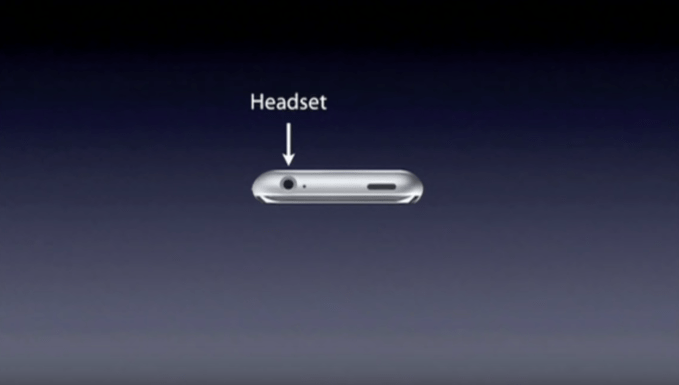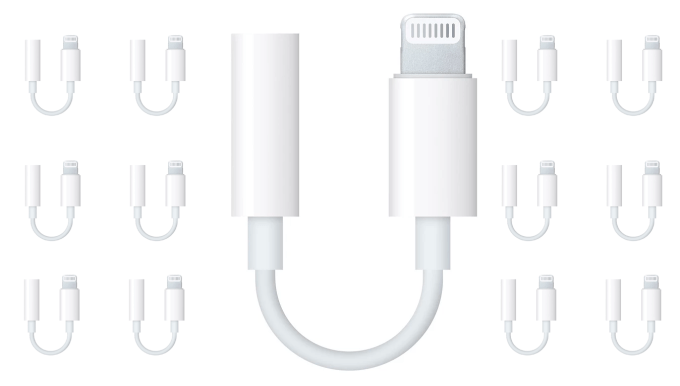At the beginning of this year, I was using my iPhone to browse new titles on Amazon when I saw the cover of “How to Break Up With Your Phone” by Catherine Price. I downloaded it on Kindle because I genuinely wanted to reduce my smartphone use, but also because I thought it would be hilarious to read a book about breaking up with your smartphone on my smartphone (stupid, I know). Within a couple of chapters, however, I was motivated enough to download Moment, a screen time tracking app recommended by Price, and re-purchase the book in print.
Early in “How to Break Up With Your Phone,” Price invites her readers to take the Smartphone Compulsion Test, developed by David Greenfield, a psychiatry professor at the University of Connecticut who also founded the Center for Internet and Technology Addiction. The test has 15 questions, but I knew I was in trouble after answering the first five. Humbled by my very high score, which I am too embarrassed to disclose, I decided it was time to get serious about curtailing my smartphone usage.
Of the chapters in Price’s book, the one called “Putting the Dope in Dopamine” resonated with me the most. She writes that “phones and most apps are deliberately designed without ‘stopping cues’ to alert us when we’ve had enough—which is why it’s so easy to accidentally binge. On a certain level, we know that what we’re doing is making us feel gross. But instead of stopping, our brains decide the solution is to seek out more dopamine. We check our phones again. And again. And again.”
Gross was exactly how I felt. I bought my first iPhone in 2011 (and owned an iPod Touch before that). It was the first thing I looked at in the morning and the last thing I saw at night. I would claim it was because I wanted to check work stuff, but really I was on autopilot. Thinking about what I could have accomplished over the past eight years if I hadn’t been constantly attached to my smartphone made me feel queasy. I also wondered what it had done to my brain’s feedback loop. Just as sugar changes your palate, making you crave more and more sweets to feel sated, I was worried that the incremental doses of immediate gratification my phone doled out would diminish my ability to feel genuine joy and pleasure.
Price’s book was published in February, at the beginning of a year when it feels like tech companies finally started to treat excessive screen time as a liability (or at least do more than pay lip service to it). In addition to the introduction of Screen Time in iOS 12 and Android’s digital wellbeing tools, Facebook, Instagram and YouTube all launched new features that allow users to track time spent on their sites and apps.
Early this year, influential activist investors who hold Apple shares also called for the company to focus on how their devices impact kids. In a letter to Apple, hedge fund Jana Partners and California State Teachers’ Retirement System (CalSTRS) wrote “social media sites and applications for which the iPhone and iPad are a primary gateway are usually designed to be as addictive and time-consuming as possible, as many of their original creators have publicly acknowledged,” adding that “it is both unrealistic and a poor long-term business strategy to ask parents to fight this battle alone.”
The growing mound of research
Then in November, researchers at Penn State released an important new study that linked social media usage by adolescents to depression. Led by psychologist Melissa Hunt, the experimental study monitored 143 students with iPhones from the university for three weeks. The undergraduates were divided into two groups: one was instructed to limit their time on social media, including Facebook, Snapchat and Instagram, to just 10 minutes each app per day (their usage was confirmed by checking their phone’s iOS battery use screens). The other group continued using social media apps as they usually did. At the beginning of the study, a baseline was established with standard tests for depression, anxiety, social support and other issues, and each group continued to be assessed throughout the experiment.
The findings, published in the Journal of Social and Clinical Psychology, were striking. The researchers wrote that “the limited use group showed significant reductions in loneliness and depression over three weeks compared to the control group.”
Even the control group benefitted, despite not being given limits on their social media use. “Both groups showed significant decreases in anxiety and fear of missing out over baselines, suggesting a benefit of increased self-monitoring,” the study said. “Our findings strongly suggest that limiting social media use to approximately 30 minutes a day may lead to significant improvement in well-being.”
Other academic studies published this year added to the growing roster of evidence that smartphones and mobile apps can significantly harm your mental and physical wellbeing.
A group of researchers from Princeton, Dartmouth, the University of Texas at Austin, and Stanford published a study in the Journal of Experimental Social Psychology that found using smartphones to take photos and videos of an experience actually reduces the ability to form memories of it. Others warned against keeping smartphones in your bedroom or even on your desk while you work. Optical chemistry researchers at the University of Toledo found that blue light from digital devices can cause molecular changes in your retina, potentially speeding macular degeneration.
So over the past 12 months, I’ve certainly had plenty of motivation to reduce my screen time. In fact, every time I checked the news on my phone, there seemed to be yet another headline about the perils of smartphone use. I began using Moment to track my total screen time and how it was divided between apps. I took two of Moment’s in-app courses, “Phone Bootcamp” and “Bored and Brilliant.” I also used the app to set a daily time limit, turned on “tiny reminders,” or push notifications that tell you how much time you’ve spent on your phone so far throughout the day, and enabled the “Force Me Off When I’m Over” feature, which basically annoys you off your phone when you go over your daily allotment.
At first I managed to cut my screen time in half. I had thought some of the benefits, like a better attention span mentioned in Price’s book, were too good to be true. But I found my concentration really did improve significantly after just a week of limiting my smartphone use. I read more long-form articles, caught up on some TV shows, and finished knitting a sweater for my toddler. Most importantly, the nagging feeling I had at the end of each day about frittering all my time away diminished, and so I lived happily after, snug in the knowledge that I’m not squandering my life on memes, clickbait and makeup tutorials.
Just kidding.

Holding my iPod Touch in 2010, a year before I bought my first smartphone and back when I still had an attention span.
After a few weeks, my screen time started creeping up again. First I turned off Moment’s “Force Me Off” feature, because my apartment doesn’t have a landline and I needed to be able to check texts from my husband. I kept the tiny reminders, but those became easier and easier to ignore. But even as I mindlessly scrolled through Instagram or Reddit, I felt the existentialist dread of knowing that I was misusing the best years of my life. With all that at stake, why is limiting screen time so hard?
I wish I knew how to quit you, small device
I decided to talk to the CEO of Moment, Tim Kendall, for some insight. Founded in 2014 by UI designer and iOS developer Kevin Holesh, Moment recently launched an Android version, too. It’s one of the best known of a genre that includes Forest, Freedom, Space, Off the Grid, AntiSocial and App Detox, all dedicated to reducing screen time (or at least encouraging more mindful smartphone use).
Kendall told me that I’m not alone. Moment has 7 million users and “over the last four years, you can see that average usage goes up every year,” he says. By looking at overall data, Moment’s team can tell that its tools and courses do help people reduce their screen time, but that often it starts creeping up again. Combating that with new features is one of the company’s main goals for next year.
“We’re spending a lot of time investing in R&D to figure out how to help people who fall into that category. They did Phone Bootcamp, saw nice results, saw benefits, but they just weren’t able to figure out how to do it sustainably,” says Kendall. Moment already releases new courses regularly (recent topics have included sleep, attention span, and family time) and recently began offering them on a subscription basis.
“It’s habit formation and sustained behavior change that is really hard,” says Kendall, who previously held positions as president at Pinterest and Facebook’s director of monetization. But he’s optimistic. “It’s tractable. People can do it. I think the rewards are really significant. We aren’t stopping with the courses. We are exploring a lot of different ways to help people.”
As Jana Partners and CalSTRS noted in their letter, a particularly important issue is the impact of excessive smartphone use on the first generation of teenagers and young adults to have constant access to the devices. Kendall notes that suicide rates among teenagers have increased dramatically over the past two decades. Though research hasn’t explicitly linked time spent online to suicide, the link between screen time and depression has been noted many times already, as in the Penn State study.
But there is hope. Kendall says that the Moment Coach feature, which delivers short, daily exercises to reduce smartphone use, seems to be particularly effective among millennials, the generation most stereotypically associated with being pathologically attached to their phones. “It seems that 20- and 30-somethings have an easier time internalizing the coach and therefore reducing their usage than 40- and 50-somethings,” he says.
Kendall stresses that Moment does not see smartphone use as an all-or-nothing proposition. Instead, he believes that people should replace brain junk food, like social media apps, with things like online language courses or meditation apps. “I really do think the phone used deliberately is one of the most wonderful things you have,” he says.

Researchers have found that taking smartphone photos and videos during an experience may decrease your ability to form memories of it. (Steved_np3/Getty Images)
I’ve tried to limit most of my smartphone usage to apps like Kindle, but the best solution has been to find offline alternatives to keep myself distracted. For example, I’ve been teaching myself new knitting and crochet techniques, because I can’t do either while holding my phone (though I do listen to podcasts and audiobooks). It also gives me a tactile way to measure the time I spend off my phone because the hours I cut off my screen time correlate to the number of rows I complete on a project. To limit my usage to specific apps, I rely on iOS Screen Time. It’s really easy to just tap “Ignore Limit,” however, so I also continue to depend on several of Moment’s features.
While several third-party screen time tracking app developers have recently found themselves under more scrutiny by Apple, Kendall says the launch of Screen Time hasn’t significantly impacted Moment’s business or sign ups. The launch of their Android version also opens up a significant new market (Android also enables Moment to add new features that aren’t possible on iOS, including only allowing access to certain apps during set times).
The short-term impact of iOS Screen Time has “been neutral, but I think in the long-term it’s really going to help,” Kendall says. “I think in the long-term it’s going to help with awareness. If I were to use a diet metaphor, I think Apple has built a terrific calorie counter and scale, but unfortunately they have not given people nutritional guidelines or a regimen. If you talk to any behavioral economist, not withstanding all that’s been said about the quantified self, numbers don’t really motivate people.”
Guilting also doesn’t work, at least not for the long-term, so Moment tries to take “a compassionate voice,” he adds. “That’s part of our brand and company and ethos. We don’t think we’ll be very helpful if people feel judged when we use our product. They need to feel cared for and supported, and know that the goal is not perfection, it’s gradual change.”
Many smartphone users are probably in my situation: alarmed by their screen time stats, unhappy about the time they waste, but also finding it hard to quit their devices. We don’t just use our smartphones to distract ourselves or get a quick dopamine rush with social media likes. We use it to manage our workload, keep in touch with friends, plan our days, read books, look up recipes, and find fun places to go. I’ve often thought about buying a Yondr bag or asking my husband to hide my phone from me, but I know that ultimately won’t help.
As cheesy as it sounds, the impetus for change must come from within. No amount of academic research, screen time apps, or analytics can make up for that.
One thing I tell myself is that unless developers find more ways to force us to change our behavior or another major paradigm shift occurs in mobile communications, my relationship with my smartphone will move in cycles. Sometimes I’ll be happy with my usage, then I’ll lapse, then I’ll take another Moment course or try another screen time app, and hopefully get back on track. In 2018, however, the conversation around screen time finally gained some desperately needed urgency (and in the meantime, I’ve actually completed some knitting projects instead of just thumbing my way through #knittersofinstagram).








